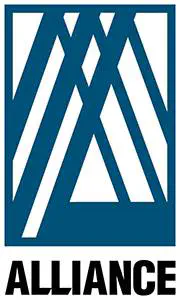Chautauquas Revive an American Forum for a New Era

CHAMPAIGN, IL – The National Computational Science Alliance (Alliance) will host three technology road shows this summer designed to demonstrate to researchers, educators and students how emerging technologies and the developing National Technology Grid will change the way people communicate, learn, and conduct research and business in the 21st century.
The three events are scheduled for
Aug. 9 and 10 at the University of New Mexico
in Albuquerque (co-hosted by the University of Kansas),
-> http://chautauqua.ahpcc.unm.edu/
Aug. 23 and 24 at the University of Kentucky
in Lexington, and
-> http://www.ccs.uky.edu/~chautauqua
Sept. 13 at 14 at Boston University.
-> http://chautauqua.bu.edu/
They are being called Chautauquas, a Seneca Indian word meaning meeting or gathering. The original Chautauqua movement started in the late 19th century, when traveling educational meetings were used to introduce new concepts and cultural realities of the industrial revolution to an increasingly diverse American population.
Today the information revolution has created a similar need to disseminate information about new technologies and concepts. Alliance Chautauquas 99 are designed to introduce new audiences to the National Technology Grid, the prototype of the next century’s information infrastructure which is being developed by the Alliance, and demonstrate how technological innovations can be used on the Grid in ways that will impact science, education, business and government.
“For the last two years the Alliance has been in the business of developing and experimenting with a new digital community, which five or 10 years down the road will be the norm for everyone,” said Larry Smarr, director of the Alliance and the National Center for Supercomputing Applications (NCSA) at the University of Illinois at Urbana-Champaign, the leading-edge site for the Alliance. “The Chautauquas give us a chance to share these developments with a wider group of university researchers and educators. We hope that these meetings will stimulate the growth of the nationwide digital research community that will drive scientific research and technology development in the 21st century.”
Each Chautauqua site will serve as an access point to the Grid, offering several presentations that will be multicast from remote sites. The remote presentations are part of the Alliance’s comprehensive plan to deploy sites as Grid access points and to coordinate research and training activities at these sites with the new Alliance Center for Collaboration, Education, Science and Software (ACCESS) in Arlington, VA.
Each Chautauqua will target key groups located in specific regions of the country. The University of New Mexico Chautauqua will target Native American colleges, researchers from government laboratories and regional institutions that are part of the Experimental Program to Stimulate Competitive Research (EPSCoR), a National Science Foundation program to stimulate research in states that have traditionally received few research dollars. The University of Kentucky will focus on EPSCoR institutions as well as the Southeastern Universities Research Association (SURA), a consortium of 41 universities in 13 southeastern states, and institutions with the Committee on Institutional Cooperation (CIC), a consortium of major Midwestern and Big 10 universities. Boston University will also target regional EPSCoR and CIC institutions, as well as other East Coast academic institutions.
“The Chautauquas will highlight research and educational initiatives specific to each region,” said Frank Gilfeather, director of the University of New Mexico’s Albuquerque High Performance Computing Center and team lead of the Alliance’s Partners for Advanced Computational Services (PACS), which is sponsoring the events. “But the Chautauquas will also be national in scope because they will highlight the Alliance’s vision to link researchers with each other and with tools and technologies via the National Technology Grid. "
Events at all three Chautauquas will focus on the Alliance’s three key initiatives, which are:
capability computing, or computing “superjobs” that require dedicated use of supercomputing power;
the evolution of networks into a ubiquitous Grid complete with software and middleware that allows people to interact in collaborative virtual spaces; and
the emergence of a scientific common portal architecture, which will give researchers access to each other and all the tools they need for their work through simple mouse clicks.
Each Chautauqua will feature a keynote address from Smarr and an address by an NSF representative. The Chautauquas will also feature targeted tutorials and events including a tutorial on scientific computing on a Linux cluster and a seminar on high-performance computing and the arts.
https://list.uvm.edu/cgi-bin/wa?A2=ind9908&L=I2-TEAM&P=63
Chautauqua Agenda, August 9-10, 1999, Albuquerque, NM
1:30PM - CLUSTERS - The Most Rapidly Growing Architecture of High-End Computing
Dr. David A. Bader, University of New Mexico, and lead for the UNM Roadrunner Linux-based Supercluster, will talk about the “next wave” in high performance computing.